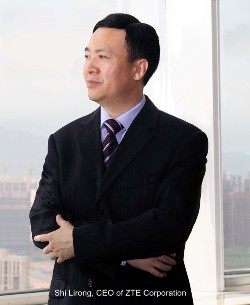Technology’s Biggest Challenge Is How to Connect with People
 The word “technology” leaves many people cold, but its pervasive presence in daily life is only going to make it even more important.
The word “technology” leaves many people cold, but its pervasive presence in daily life is only going to make it even more important.
Individuals, businesses, governments and countries are dependent on information technology to drive greater productivity and efficiencies.
The challenge for the IT industry is how to make this dependence more enjoyable and intuitive for users to access content and applications.
This is imperative because this year, the emergence of the “internet of thing” (IoT) will extend the sphere of IT even further into everyday life. IoT will allow devices of any nature to be interconnected and used to communicate with each other or with humans in real-time, enabling new possibilities around data, new ways of interacting and new services.
IoT will be big this year, with research firm Gartner predicting 4.9 billion “connected things” to be in use, up 30 percent from last year.
Every possible device imaginable is being connected in some way from Bluetooth-enabled toothbrushes to medical devices, cameras, printers and of course the many wearables that are hitting the market. The reality of a hyper-connected world is here today.
In the business world, Gartner predicts IoT will digitize everything and enable any industry to manage, monetize, operate and extend products, services and data.
Researchers at IDC make similar predictions, forecasting rapid expansion of the traditional IT industry into areas not typically viewed as within IT’s universe.
The whole electronics industry, citywide infrastructure, car and transport systems as well as the home, are just a few examples of where IoT is disrupting operations today.
IDC predicts that IoT spending will exceed US$1.7 trillion this year, up 14 percent from last year, and will hit US$3 trillion by 2020. A third of spending for intelligent embedded devices will come from outside the IT and telecommunications industries.
“This amounts to a dramatic expansion of what we would consider IT,” said Frank Gens, chief analyst at IDC.
This implies a fundamental commitment to innovate and explore new applications of technology with the potential to transform how we live and work―whether through the rapid rise of mobile applications, or interactions between machines and human users.
Thinking big is crucial and China is at the forefront of it.
Local governments and municipalities across the country are looking at new energy-powered vehicles as part of smart city metropolitan technology projects. Having carmakers and IT companies work together to roll out wireless charging technology for electric vehicles on a large scale this year could be key to their success.
IoT will be a major enabler for smart city projects as intelligent sensors and networks are required to proliferate across city infrastructure. More than 100 cities in China are working on programmes to give residents easier access to information and smart applications covering everything from transport, tourism, business, education to health care.
Air China, financial services companies and internet service providers are partnering to roll out the industry-wide Air China Wi-Fi Alliance, giving airline passengers inflight access to broadband internet.
In finance, ground-breaking payments technologies are being pioneered, including phone-based point-of-sales and photonics-based payments, which promise to change poor security perceptions of near-field communications.
These examples demonstrate the new ways that IT is being applied to everyday life and that China is already a source of industry innovation as well as a driver of global trends.
IDC predicts that this year, China will account for 43 percent of all ICT industry growth, a third of all smartphone purchases, and about a third of all online shoppers.
More than 680 million people in China will be online next year, or 2.5 times the number in the United States.
With the world’s largest mobile user base and increased commitment to technology innovation, China will continue to drive much of the development in IoT and the broader global IT market, and this year will only see China’s influence and reach across the global IT landscape grow.